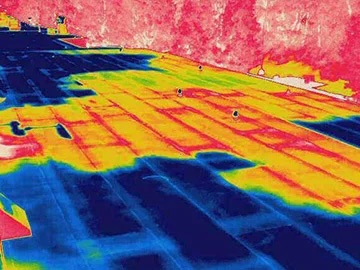Infrared Inspections of Retrofitted Roofs
Sponsored by:

If your roof has been retrofitted with a new roof installed over an existing one, it is imperative that you test the roofing system for water infiltration at least annually. With limited opportunity for egress, water entering the upper roof of a retrofitted system can cause widespread damage in a very short period of time. To make matters worse, there is usually no visual evidence of this type of a leak from inside of the building.

Performed in conjunction with regular visual inspections of your roof, infrared inspections of low slope roofs are a very cost effective way of tracking the overall health of your facility’s roofing system. Locating leaking areas while they are small allows them to be addressed before they can spread. Additionally, moisture trapped within a roofing system almost never dries out and can cause premature failure of the roofing membrane, adhesives, fasteners, and the roof deck.
Whether you choose to have an in-house thermography team or an outside contractor perform the inspection, make certain that the Thermographer is both Certified and experienced. Since an infrared imager cannot confirm moisture presence, all infrared data must be verified by invasive testing as well.
Infrared inspection of flat roofs is one of the many topics covered in the Infraspection Institute Level I Certified Infrared Thermographer® training course. For more information or to register for a course, visit Infraspection Institute or call us at 609-239-4788.

